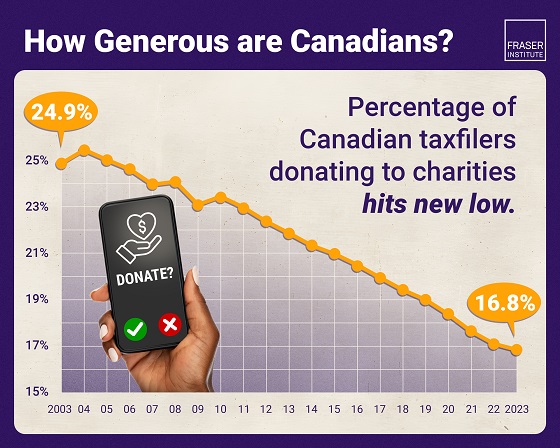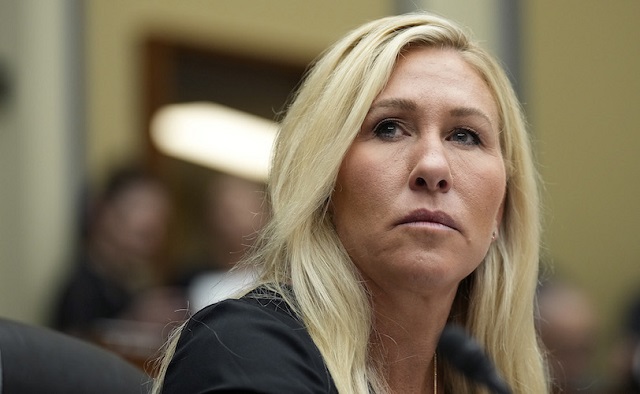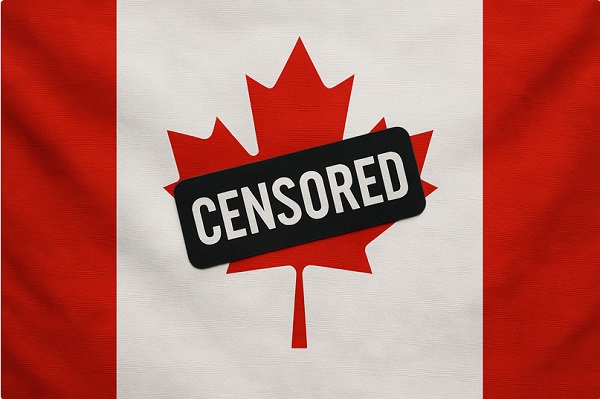MAiD
Canada’s devastating assisted suicide regime is tearing families apart

From LifeSiteNews
The father stated that his daughter’s ‘capacity to consent to [assisted suicide] is impacted by mental illness’ and that she had likely been ‘unduly influenced by a third party.’
Last year, I noted in First Things that of all the perverse lies told by proponents of euthanasia, one of the worst is their claim that it reduces suffering in society. The precise opposite is true. We have seen this in Canada time and again; heartbroken relatives reaching out to the media to explain how the assisted suicide of a loved one has left them destroyed. Each person who dies at the end of a doctor’s needle leaves loved ones behind; many of them are deeply traumatized by the experience.
Gary Hertgers of British Columbia found out that his sister, Wilma, had died by lethal injection when her building manager called him to inform him that the coroner had just left her apartment. A doctor told the Globe and Mail that he still has nightmares about his father’s euthanasia death, which the family opposed. Two sisters in B.C. found out that their mother had died through euthanasia by text message. Another mother whose troubled son was approved for euthanasia only managed to have that approval rescinded by launching a media campaign.
The CBC is now reporting on a similar story. A desperate father has requested that Court of King’s Bench Justice Colin Feasby in Alberta examine the process that led to two of three doctors approving his daughter for euthanasia (which is referred to in Canada as “MAiD,” or medical assistance in dying). His daughter, who suffers from autism, is only 27 years old. The court has issued a publication ban to protect the identities of the family members and the doctors involved; CBC identified the father as “W.V.” and the daughter as “M.V.”
According to court proceedings, M.V. was approved for euthanasia in December – signoff by two doctors is required to meet the threshold. She was given the date of February 1 to receive the lethal injection. M.V. still lives with her father, who managed to obtain a temporary injunction halting the impending euthanasia (the CBC reported that this “prevent(ed) M.V. from accessing MAiD”) the day before her scheduled death. Her father argued to the court that “M.V. suffers from autism and possibly other undiagnosed maladies that do not satisfy the eligibility criteria for MAiD.”
The daughter’s lawyer, Austin Paladeau, countered by arguing that M.V. is “not trying to withhold or hide anything” by her failure to supply medical documents justifying euthanasia, but that “She’s saying ‘it’s none of (W.V.’s) or the public’s business, I’ve been approved by two doctors, I am entitled to this and, court, it’s none of your business either.’”
Her father, who still cares for her, feels differently; her death is very much his business. His lawyer, Sarah Miller, argued in a brief: “As it stands, AHS (Alberta Health Services) operates a MAiD system with no legislation, no appeal process and no means of review.”
Miller is asking the Calgary judge for a judicial review of M.V.’s approval for euthanasia, and W.V. submitted a 2021 report to the court from a neurologist who stated that M.V. was “normal”; the father also stated that M.V.’s “capacity to consent to MAiD is impacted by mental illness” and that she had likely been “unduly influenced by a third party.” M.V.’s lawyer argued that the issue at stake was medical autonomy itself, stating:
He’s at risk of losing his daughter and while this is sad, it does not give him the right to keep her alive against her wishes. One of the real challenging parts of this process… is what’s actually happening. I completely understand (W.V.) does not want his daughter to die… I represent (M.V.), I don’t want her to die either but that doesn’t play into account here. Even though we have or may have very strong views… at the end of the day this is (M.V.’s) decision.
The judge is grappling with the case. “As a court, I can’t go second guessing these MAiD assessors… but I’m stuck with this: the only comprehensive assessment of this person done says she’s normal,” Feasby stated. “That’s really hard.” He called the case a “vexing” one and, according to the CBC, “reserved his decision on whether he’ll set aside the temporary injunction preventing M.V. from accessing MAiD… the other part of his decision will deal with whether a judicial review will take place, which would examine how doctors came to sign off on M.V.’s MAiD application.”
I hope Feasby makes the right decision. If he does not, a father will face the horror of a doctor coming into his home and giving his daughter a lethal injection against his will – with the entire force of the state endorsing the doctor’s right to do so. At the end of the day, this case is vexing – but it really isn’t hard.
International
Trump admin wants to help Canadian woman rethink euthanasia, Glenn Beck says

From LifeSiteNews
Jolene Van Alstine, approved for state-sanctioned euthanasia after enduring long wait times to receive care for a rare parathyroid disease, is in need of a passport to enter the U.S.
Well-known American media personality Glenn Beck says he has been in touch with the U.S. State Department to help a Canadian woman in Saskatchewan reconsider euthanasia after she sought assisted suicide due to long medical wait times to address her health problems.
As reported by LifeSiteNews on Tuesday, Canadian woman Jolene Van Alstine was approved to die by state-sanctioned euthanasia because she has had to endure long wait times to get what she considers to be proper care for a rare parathyroid disease.
Van Alstine’s condition, normocalcemic primary hyperparathyroidism (nPHPT), causes her to experience vomiting, nausea, and bone pain.
Her cause caught the attention of Beck and many other prominent Americans and Canadians on X.
In an update today on X, Beck said, “Jolene does not have a passport to gain legal entry into the U.S., but my team has been in touch with President (Donald) Trump’s State Department.”
“All I can say for now is they are aware of the urgent life-saving need, and we had a very positive call,” he added.
Beck had said before that he was in “contact with Jolene and her husband” and that he had “surgeons who emailed us standing by to help her.”
As of press time, neither the State Department nor other officials have not yet confirmed Beck’s claim that he has been in touch with them.
As a result of Van Alstine’s frustrations with the healthcare system, she applied for Canada’s Medical Assistance in Dying (MAiD) and was approved for January 7.
As reported by LifeSiteNews, over 23,000 Canadians have died while on wait lists for medical care as Prime Minister Mark Carney’s Liberal government is focused on euthanasia expansions.
A new Euthanasia Prevention Coalition report revealed that Canada has euthanized 90,000 people since 2016, the year it was legalized.
As reported by LifeSiteNews recently, a Conservative MP’s private member’s bill that, if passed, would ban euthanasia for people with mental illness received the full support of the Euthanasia Prevention Coalition.
Great Reset
Proposed ban on euthanasia for mental illness sparks passionate debate in Canada’s Parliament

From LifeSiteNews
“When a person is standing on the edge, the role of a responsible nation is to pull them back.”
Conservative MP Tamara Jansen’s Bill C-218—the “Right to Recover Act”—was debated in Parliament on Friday. The legislation would ban euthanasia for those suffering solely from a mental illness, which was legalized in 2021 with the Trudeau government’s Bill C-7, but subsequently delayed. It is set to come into effect in 2027, pending a parliamentary report.
Tamara Jansen led with a passionate and powerful speech highlighting the desperate need for Bill C-218; Conservative MP Andrew Lawton gave a supporting speech in which he shared his own experience with a nearly successful suicide attempt. Two Liberal MPs and a member of the Bloc Quebecois pushed back in support of euthanasia for mental illness.
Jansen moved that Bill C-218 be read the second time and referred to committee, and asked her fellow parliamentarians to imagine someone’s son, in his forties, struggling with a painful illness and struggling with addiction, depression, and anxiety. He is supported by his family, she said, and they are doing their best but struggling. When he finally gets a psychiatrist appointment, he hopes he might finally get real help.
“He is vulnerable, scared and hanging on by a thread,” Jansen said. “At that appointment, instead of being offered a plan to get him stable, MAID is raised as an option. The assessment moves ahead, and before he ever receives proper support for his mental health or addictions, he is approved. His MAID provider is the one who drives him to the place where his life is ended. This is someone’s son who needed help, not a final exit.”
“Believe it or not, this actually happened here in Canada, and this is where we are headed if we do not act,” she emphasized. “Unless this Parliament chooses a different path, Canada will allow MAID for people whose only condition is mental illness. That means men and women struggling with depression, trauma or overwhelming psychological pain could be steered toward death by a system that too often cannot offer timely treatment, consistent follow-up or even basic support.”
Jansen noted that when Parliament last debated assisted suicide, mental illness was not included in the core discussion—but that it was added “in a last-minute Senate amendment to Bill C-7.” Since then, Canadians from all walks of life have spoken clearly against this dangerous expansion. “Psychiatrists across Canada, including the chairs of psychiatry at all 17 medical schools, have told us plainly that there is no reliable way to predict when a mental illness is irremediable, which is a requirement in the MAID law,” she reminded her colleagues.
READ: Canadian broadcaster’s positive coverage of disability advocate’s euthanasia sends terrible message
“We must ask: who receives suicide prevention and who is guided toward MAID?” she asked. “If a person suffering from depression calls a crisis line tonight, do we encourage them to hold on or do we quietly redirect them to an assessor? What principle decides the answer? What medical test? What ethical standard? There is none. That is because the very feelings that drive someone to seek MAID, hopelessness, despair or the belief that they are a burden, are the same signals that every suicide prevention worker is trained to treat as a cry for help.”
Jansen also noted that Canada’s planned expansion has been condemned in the international community. “International human rights experts have raised the alarm, including the UN Committee on the Rights of Persons with Disabilities, which has urged Canada to step back. It warns that our trajectory risks discriminating against people with disabilities and mental illness and recommends repealing this expansion entirely. This is what Bill C-218 would do.” She cited several heartbreaking examples from Ontario’s MAID death review committee findings:
They describe a man who had cancer. I will call him Bill. Earlier in his illness, he had briefly mentioned MAID, as frightened patients tend to do. By the time he was assessed, he was delirious, confused and heavily sedated. His own medical team made it clear that he no longer had the capacity to make major decisions, yet a MAID assessor shook him awake, took the faint motion of lips as consent, withheld sedation, obtained a rushed virtual second opinion and ended his life that same day. Bill was not stable. Bill was not capable. He did not understand what was happening.
Alana Hirtle, the Liberal MP for the Nova Scotia riding of Cumberland-Colchester, responded by attempting to divert from the issue. She told Jansen that her father died by assisted suicide in August 2024, after suffering from “four different types of cancer over five years,” and stated that she “fully supported his choice” and that she “supported the process as it took place and was there throughout it.” She then asked if Jansen had voted for the “initial legislation”; Jansen told her she was not an elected MP at the time.
Claude DeBellefeuille, a Bloc Quebecois MP, then claimed that he was “stunned” by what he had heard, stating that Jansen had been misleading “by claiming that the law allows for medical assistance in dying when major mental illness is the sole underlying disorder” when the “member knows that in 2027, a joint committee of members and senators will make a decision based on the recommendations of the Department of Health.” While he did, somewhat surprisingly, agree that “the medical community is not ready and will probably not be ready in 2027,” he insisted that Jansen “has simply found a way to assert her opposition to medical assistance in dying.”
“We simply do not have the medical grounds to declare that a life is beyond hope,” Jansen responded. “We have already seen cases where people were approved for MAID not because their condition was truly irremediable but because they lacked housing, treatment or basic support. That is not medicine; that is a system misreading desperation as destiny. … When a person is standing on the edge, the role of a responsible nation is to pull them back.”
Juanita Nathan, the Liberal MP from Pickering-Brooklin, gave a speech essentially reiterating the government’s talking points. More research is needed, she said, but fundamentally the “panel concluded that the existing Criminal Code safeguards, when supported by the development of MAID practices standards and the implementation of other recommendations, are adequate to allow for safe provision of MAID to people whose sole underlying medical condition is a mental illness.”
MP Andrew Lawton recounted his own suicide attempt, in which he almost lost his life and spent seven weeks in the hospital, during which he was resuscitated multiple times and on life support. He noted that on that “horribly dark and sad December day in 2010,” he could never have imagined that he would one day be standing in the House of Commons, happily married with a successful career. It is that experience, he said, which spurs him to speak so forcefully for Bill C-218—because “if the laws that are coming into force in 15 months had been there 15 years ago, I would probably be dead right now.”
When Bill C-218 was introduced, Lawton launched the “I Got Better” campaign, inviting Canadians to share their own stories.
He shared several with the House—while a number of the Liberal MPs talked loudly with each other across the House, even laughing out loud at each other. He shared the story of an Ottawa lawyer, who feared using MAID if depression should return. He shared the story of a man who struggles with mental illness and has attempted suicide and is afraid of what he might do if MAID is available. A woman who had been in a long-term abusive relationship told him that she would have used MAID if it had been available.
Lawton detailed several other stories and reminded his colleagues of testimony they had previously heard. “Dr. John Maher testified before Parliament that 7% of those who attempt suicide die by suicide,” he said. “That means that 93% of people who, at one or multiple points, want to end their life eventually get over that. The success rate of MAID is 100%. By design, this is a policy that will give up on people.”
Lawton’s closing lines summed up the stakes. “These are real people,” he said. “There are faces to this. If Bill C-218 does not pass, people will die. We have a right and a duty to stand up for those who need it. I will be proudly supporting this bill, and I thank my colleague so much for introducing it.”
You can support Bill C-218 and submit your own story to MP Andrew Lawton here.
-

 COVID-192 days ago
COVID-192 days agoTrump DOJ seeks to quash Pfizer whistleblower’s lawsuit over COVID shots
-

 Crime2 days ago
Crime2 days agoU.S. seizes Cuba-bound ship with illicit Iranian oil history
-

 Business1 day ago
Business1 day agoAlbertans give most on average but Canadian generosity hits lowest point in 20 years
-

 International2 days ago
International2 days agoMarjorie Taylor Greene’s ’60 Minutes’ interview reveals power struggle between populists and RINOs
-

 Daily Caller2 days ago
Daily Caller2 days agoUS Supreme Court Has Chance To End Climate Lawfare
-

 Censorship Industrial Complex2 days ago
Censorship Industrial Complex2 days agoOttawa’s New Hate Law Goes Too Far
-

 Bruce Dowbiggin1 day ago
Bruce Dowbiggin1 day agoCarney Hears A Who: Here Comes The Grinch
-

 Business1 day ago
Business1 day agoTaxpayers Federation calls on politicians to reject funding for new Ottawa Senators arena







